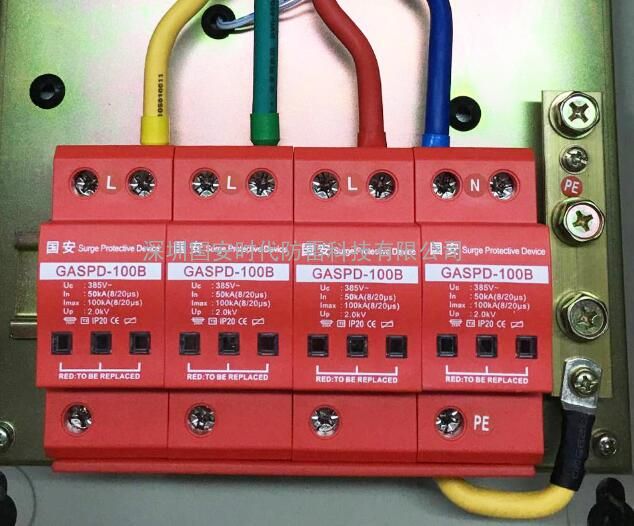Surge protection device (SurgeprotectionDevice) is an indispensable device for lightning protection of electronic equipment. The function of the surge protector is to limit the instantaneous overvoltage that enters the power line and signal transmission line to the voltage range that the device or system can withstand, or to discharge strong lightning current into the ground to protect the protected device or system from being affected. Damaged by impact.
Surge protector lightning protection signal transmission
Surge protection device (SurgeprotectionDevice) is an indispensable device for lightning protection of electronic equipment. In the past, it was often referred to as "arrester" or "overvoltage protector" and was abbreviated as SPD in English. The function of the surge protector is to limit the instantaneous overvoltage that enters the power line and signal transmission line to the voltage range that the device or system can withstand, or to discharge strong lightning current into the ground to protect the protected device or system from being affected. Damaged by impact.
Surge protectors vary in type and structure for different applications, but they should include a non-linear voltage limiting element. The basic components used for surge protectors are: discharge gaps, gas discharge tubes, varistors, suppression diodes, and choke coils.
First, SPD classification:
1. According to the principle of work:
(1) Switch type: Its working principle is that it exhibits high impedance when there is no instantaneous overvoltage, but once it responds to lightning overvoltage, its impedance mutates to a low value, allowing the lightning current to pass through. Devices used for such devices include: discharge gaps, gas discharge tubes, thyristors, etc.
(2) Limiting voltage type: Its working principle is that when there is no instantaneous overvoltage, it is high-impedance, but with increasing surge current and voltage, its impedance will continuously decrease, and its current and voltage characteristics are strongly nonlinear. Devices used for such devices include: zinc oxide, varistors, suppression diodes, avalanche diodes, and the like.
(3) Shunt type or turbulent type
Shunt type: In parallel with the protected device, it exhibits low impedance for lightning pulses and high impedance for normal operating frequency.
Turbulence: In series with a protected device, it exhibits a high impedance for lightning pulses and a low impedance for normal operating frequencies.
Devices used for such devices include: choke coils, high-pass filters, low-pass filters, quarter-wave short-circuiters, and the like.

Motorized Jib Cranes - Have Complete Control of Your Hoist and PayloadWhen working near the column on a Jib Hoist with a high capacity, you may notice the load can be extremely difficult to position. By motorizing the rotation, you eliminate the potential for injury moving a load, and assist your operator in position the load correctly.
Variable Frequency Drives (VFD) are standard on all Motorized Jib Cranes. The drive can be configured for single or multiple speeds.Precision drive assembly with field adjustable torque limiter for added drive protection.Worm gear reducer with oil bath lubrication for reliable operation, and low maintenance.Totally enclosed, fan cooled, 3 phase Class B, 40°C ambient continuous, "C" faced motor, 30 minute rated, is standard.Direct drive for all series of motorized free standing jib cranes allow for accurate and consistent positioning of loads.
This modular drive design makes maintenance easy and reduces long term costs.
Floor Mounted Jib Crane ,Floor Mounted Crane ,Mobile Floor Mounted Jib Crane,Small Floor Mounted Jib Crane
Shandong Lite Electrical Co.,Ltd , http://www.chinacranegroup.com